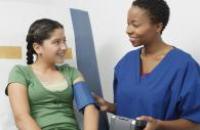National Healthcare Quality and Disparities Report
Latest available findings on quality of and access to health care
Data & Analytics
- Data Infographics
- Data Visualizations
- Data Tools
- Data Innovations
- All-Payer Claims Database
- Consumer Assessment of Healthcare Providers and Systems (CAHPS®) Program
- Healthcare Cost and Utilization Project (HCUP)
- Medical Expenditure Panel Survey (MEPS)
- National Healthcare Quality and Disparities Report Data Tools
- Network of Patient Safety Databases
- AHRQ Quality Indicator Tools for Data Analytics
- Surveys on Patient Safety Culture
- United States Health Information Knowledgebase (USHIK)
- Data Sources Available from AHRQ
Programs
The Agency for Healthcare Research and Quality (AHRQ)'s programs offer practical information to help a variety of health care organizations, providers, and others make care safer in all health care settings.
Patient Safety Network (AHRQ PSNet)
The AHRQ Patient Safety Network is a national Web-based resource featuring the news and resources on patient safety. AHRQ PSNet also hosts all previous AHRQ WebM&M (Morbidity and Mortality Rounds on the Web) content, including Cases and Commentaries as well as Perspectives on Safety.
Patient Safety Organization (PSO) Program
The Patient Safety and Quality Improvement Act of 2005 authorizes AHRQ to list or designate entities as PSOs that attest to having expertise in identifying the causes of, and interventions to reduce the risk of, threats to the quality and safety of patient care. The primary activity of an entity or component organization seeking to be listed as a PSO must be to conduct activities to improve patient safety and health care quality.
Patient-Centered Medical Home (PCMH)
The patient-centered medical home is a promising model for transforming the organization and delivery of primary care. This website features evidence, examples, and lessons learned from primary care practices that have transformed their approach to organizing and delivering care. Policymakers, researchers, practices, and practice facilitators can access evidence-based resources about the medical home and its potential to transform primary care and improve the quality, safety, efficiency, and effectiveness of U.S. health care.
Patient-Centered Outcomes Research (PCOR) at AHRQ
PCOR compares the impact of two or more preventive, diagnostic, treatment, or health care delivery approaches on health outcomes, including those that are meaningful to patients. Congress instructed AHRQ to invest in four specific activities: Disseminate findings from the Patient-Centered Outcomes Research Institute and Government-funded entities that sponsor research on comparative clinical effectiveness, develop a publicly available resource that collects government-funded evidence and research from public, private, not-for-profit, and academic sources, support the incorporation of research findings into health information technologies associated with clinical decision support, and award training grants to develop the skills of researchers to build capacity for future comparative effectiveness research.
Pediatric Quality Measures Program
The AHRQ-CMS Pediatric Quality Measures Program (PQMP) is a central component to the overall HHS strategy for implementing the Children's Health Insurance Program Reauthorization Act of 2009 (CHIPRA), to support State Medicaid/CHIP agencies in collecting and reporting on a core set of standardized child health quality measures (“Initial Core Set” now called the “Child Core Set”) in alignment with other quality measures collected by states, health plans, and providers.
Perinatal Safety
AHRQ Safety Program for Perinatal Care-I aims to improve the patient safety culture of labor and delivery (L&D) units and decrease maternal and neonatal adverse events resulting from poor communication and system failures. AHRQ Safety Program for Perinatal Care-II provides resources that align the first toolkit’s adaptive care processes with the clinical care processes recommended in the Alliance for Innovation on Maternal Health (AIM) program. The new tools are designed to help L&D units reduce obstetric hemorrhage and severe hypertension in pregnancy, two leading known causes of preventable maternal mortality and severe maternal morbidity in the United States.
Practice-Based Research Networks (PBRNs)
PBRNs are groups of primary care clinicians and practices working together to answer community-based health care questions and translate research findings into practice. PBRNs engage clinicians in quality improvement activities and an evidence-based culture in primary care practice to improve the health of all Americans.
Prevention and Chronic Care Research
AHRQ’s Prevention/Care Management Portfolio works to improve the delivery of primary care services to meet the needs of the American population for high quality, safe, effective, and efficient clinical prevention and chronic disease care.
Primary Care Practice Improvement
The primary care system currently has significant—and perhaps unprecedented—opportunities to emphasize quality improvement and practice redesign in ways that could fundamentally improve health care in the United States.
Quality Measurement
This page has links to quality improvement measurement, tools, and information, including All-Payer Claims Databases and the AHRQ Quality and Safety Review System, ambulatory clinical performance measures, the National Quality Measures Clearinghouse, and TalkingQuality.
















